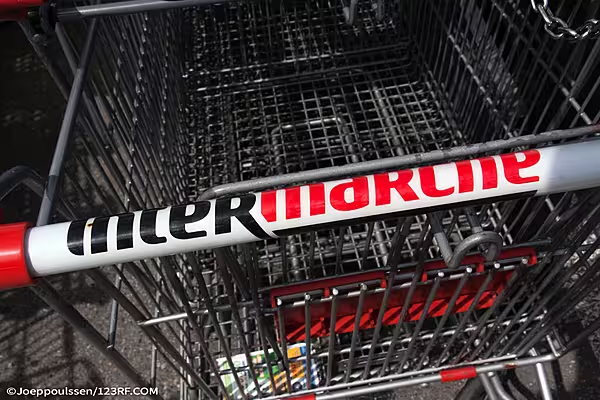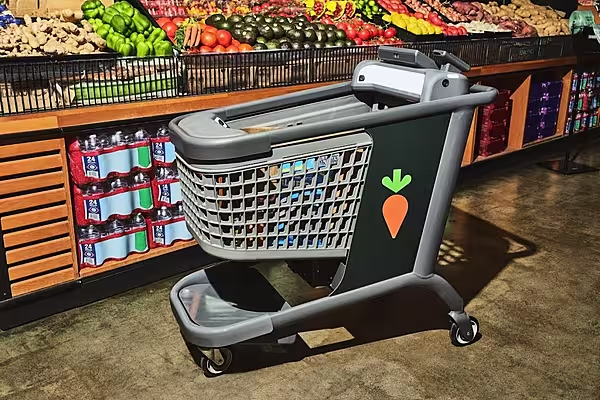ESM talks to Sesami's Alistair Fowler-Marson about the enduring appeal of cash, and how retailers can improve and digitise their cash management needs.
To borrow a line from the musical Cabaret, money ‘still’ makes the world go round. While recent years have seen a push towards contactless and fintech solutions, a significant demographic still relies heavily on cash – even more so during challenging economic periods for consumers.
At the same time, cash has been largely neglected by many retailers, especially in Western Europe, with recent years seeing increased investment in cashless stores, or cash-free checkout solutions, driven by a belief that cash would become obsolete in due course.
Direction Of Travel
“Until the pandemic came along, a lot of people were either under investing or not investing at all in anything to do with cash, because the general direction of travel was, ‘it’s on its way out’,” explains Alistair Fowler-Marson, Global Vice President of Strategic Business Development at Sesami, a leading provider of next-generation cash-management solutions.
“For retailers, the thinking was, ‘This isn’t something we should prioritise right now. We need to focus on e-commerce, electronic shelf edge labelling, and supply chain optimisation – but not cash’. However, they faced public backlash, which indicated that people disagreed with this approach.”
In the past couple of years, however, public resistance and the enduring reliance on cash by certain demographics – particularly older shoppers, but also a growing cohort of younger consumers – have shown that cash remains essential.
While it had an initial detrimental effect, the COVID-19 pandemic highlighted the resilience of cash in its physical form, and its usage has risen again as people have returned to in-store shopping during a cost of living crisis.
“Not only has cash survived probably the biggest social experiment it’s ever had, it’s actually risen in popularity as people return to shops and choose to use cash, not only for convenience, but also as a budgeting tool due to the cost of living crisis,” says Fowler-Marson.
A Different Conversation
The enduring importance of cash is therefore leading retailers to rethink their stance, and Sesami’s mission is to support the continued use of cash through innovative solutions that ensure businesses can handle cash efficiently and cost-effectively.
Despite shifting financial trends, cash remains robust, offering anonymity, reliability, and consistency – a €50 note remains a €50 note, regardless of the fluctuations in the marketplace.
Unlike card payments, which incur fees and can be subject to IT failures, cash transactions maintain their full value without additional costs. The recent global IT outage also serves as a reminder that ‘cash always works’ in a crisis.
This counters the narrative pushed by banks and financial institutions, which have framed the reduction in cash usage as a consumer preference, rather than a consequence of reduced access to cash services.
“Cash is going nowhere, and that is starting to drive a different conversation among retailers, which is around ‘What are we going to do?’, ‘What are the costs involved?’ and ‘What can technology do for us?’,” says Fowler-Marson.
At the same time, challenges remain, including the logistical difficulties of obtaining and banking cash, especially for smaller businesses.
Seamless And Cost-Efficient
Sesami’s solutions address the physical movement of cash, making it seamless, easy, and cost-efficient for both retailers and customers.
Its AI-powered solutions continuously analyse data to optimise cash handling, reducing the amount of idle cash held onsite. This can be crucial for supermarket chains, where excessive cash reserves can often sit idle, a level of overstock that leads to unnecessary costs, including frequent cash-in-transit (CIT) pickups.
Sesami not only automates cash handling but also ensures continuous optimisation. It adjusts cash reserves based on fluctuating usage patterns across different regions, ensuring that cash supply matches demand.
This dynamic approach allows retailers to avoid significant investments in cash management technology that might become obsolete if cash usage changes in the future.
Important Considerations
According to Fowler-Marson, retail executives should consider three key areas when it comes to cash management, and how optimisation of cash handling processes can bolster both customer satisfaction and operational efficiency.
Firstly, businesses should evaluate how much time is currently spent handling cash within their operations. While these activities have seen associated costs reduce in recent years as cash usage has declined, essential tasks – floating tills, securing cash in the vault, dealing with banks or CIT companies – remain unavoidable.
Thus, while supermarkets and other retailers have been reducing investment in cash handling infrastructure, this approach is short-sighted, and may be affecting operations elsewhere in the store.
Secondly, retailers need to consider the convenience of paying with cash for many consumers. While governments and central banks are starting to recognise the importance of protecting access to cash through legislation, this sentiment is not yet fully reflected in the actions of retailers.
Public surveys consistently show that a significant majority (70% to 80%) of people want the option to pay in cash, highlighting a disconnect between public preference and business practices.
Thirdly, while investment in state-of-the-art self checkout (SCO) kiosks can improve transaction efficiency, customers that prefer or need to pay with cash often feel like second-class citizens.
However, by using AIdriven technology in cash management equipment, powered by Sesami, you are effectively digitalising cash, removing any barriers to the transaction process.
Time For A Rethink
After all, it’s not the case that many retailers are necessarily against the use of cash – it’s more that they simply aren’t thinking about it.
“That can be in one of two ways,” says Fowler-Marson. “Either they’re not thinking about how their store operations are structured to make it difficult for shoppers to pay in cash, and the effect on customer experience that might have, or, they’re not aware of the technology options that are available to them, which could really help them save money when handling cash.
“Supermarkets are one of the most essential services in any economy, so why should they be making life difficult for their customers, even if they are doing so unknowingly?”
For more information, visit www.sesami.io.
The article was written in partnership with Sesami.














